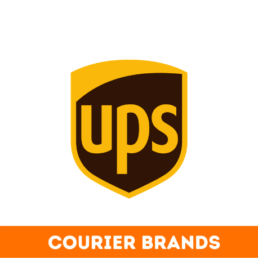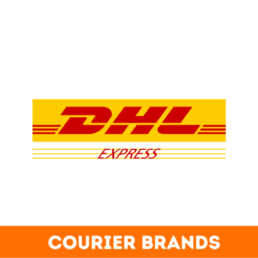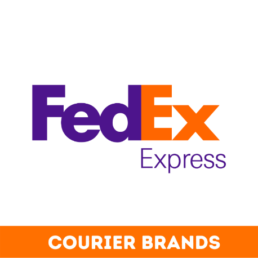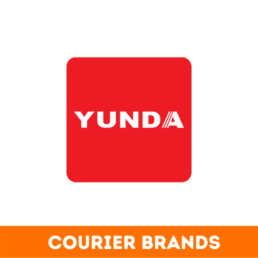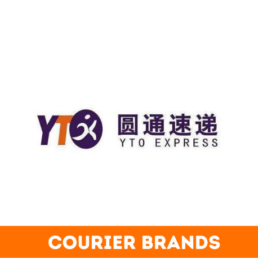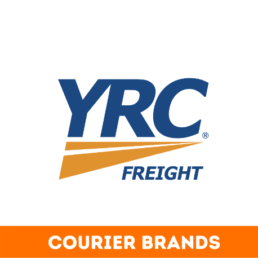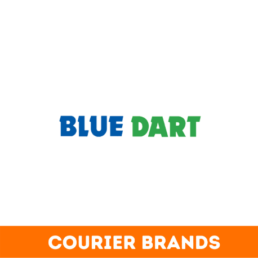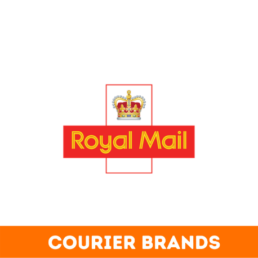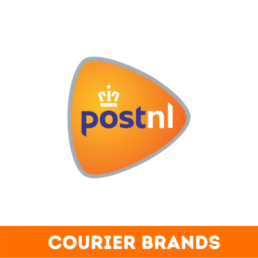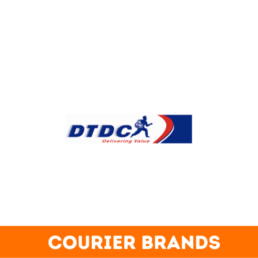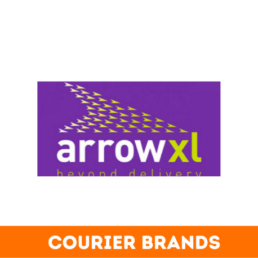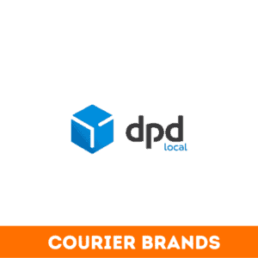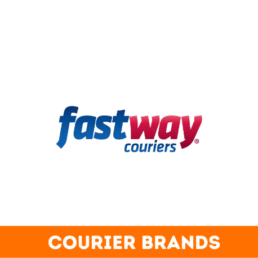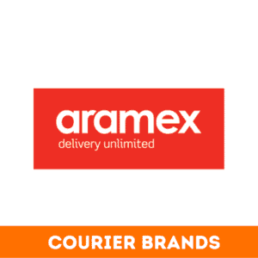What is Avicii Marketplace?
Avicii Marketplace is a complete commerce platform that lets you start, grow, and manage a business.
Our expertise and leadership in commerce come from the experiences of millions of merchants on our platform. Their successes allow us to forecast and build the right features to not only power commerce today but to help shape and define what the industry looks like tomorrow.
How does Avicii Marketplace work?
Avicii Marketplace unifies all of your commerce onto a single platform.
With Avicii Marketplace, merchants can build and customize an online store and sell in multiple places, including web, mobile, in person, brick-and-mortar locations, and pop-up shops and across multiple channels from social media to online marketplaces.
Avicii Marketplace is completely cloud-based and hosted, which means you can access it from any connected compatible device and we’ll handle software and server upgrades and maintenance for you. This gives you the flexibility to access and run your business from anywhere with an internet connection.
On any given day, a commerce business requires an array of tools to manage products, inventory, payments, and shipping—and they spend a lot of time and money stitching disparate systems and data together. Avicii Marketplace groups those technologies together and ensures that you can easily access and integrate any other business tools you need to make Avicii Marketplace work for your business.
Think of Avicii Marketplace’s product as layers you can choose from to build the right stack for your business:
Layer 1: Avicii Marketplace’s core product
This is what you get as soon as you buy any Avicii Marketplace plan. It includes everything you need to turn your idea into a business and start selling: templates for the look and feel of your store, tools to sell in multiple places online and in-person, integrated payment processing, the best-converting checkout on the internet, SEO and marketing tools—these are all part of Avicii Marketplace’s core product. This is the foundation upon which our other products and applications are built.
And for those who want to fine-tune their store and experience, you get access to Avicii Marketplace APIs and development tools to customize your store’s capabilities even further.
Layer 2: Avicii Marketplace’s additional products and services
Every independent business is unique. And as businesses grow, their needs evolve accordingly. That’s why we offer our customers powerful upgrades to help them grow their businesses on our platform. From easier access to capital to accelerated payment options, these products and services are exclusive to Avicii Marketplace customers and are designed to help independent business owners have a leg up in the market.
Why Avicii Marketplace?
- Avicii Marketplace supports the entire Commerce community. Online, offline and everywhere in between. We are home to the largest, most diverse set of entrepreneurs, merchants, developers, and partners.
- Avicii Marketplace is global. We empower entrepreneurs around the world to create, connect, and innovate their businesses. With merchants spanning more than 175 countries, we provide entrepreneurs everywhere the platform, building blocks and tools needed to win in commerce.
- Avicii Marketplace empowers creative expression. We believe there should be more unique voices, stories and experiences, not fewer, and that’s why we design our product with the greatest amount of extensibility, flexibility and expression.
- Avicii Marketplace is the most integrated commerce platform out of the box. Avicii Marketplace not only centralizes entire commerce businesses but also offers access to the widest set of commerce ecosystem integrations built using a shared technical framework. With this deep integration, we have breadth and depth of themes, apps, channels, surfaces, products, and experiences.
- Avicii Marketplace absorbs unnecessary complexity. We know the world isn’t designed for independent businesses to start, scale and succeed. That’s why we make it as simple and accessible as possible to maximize entrepreneurs’ access to growth tools.
- Avicii Marketplace is built to scale with you. No matter your technical maturity, growth, size, complexity or , location—you will never lack access to technology and features to build your business, and you will never outgrow Avicii Marketplace as your needs change,, scale or evolve.
Create commerce; everywhere
Avicii Marketplace helps you to transform an idea, a or dream, a vision into a real commerce experience online, offline and everywhere in between.
- Storefronts (Online Store: Custom Storefronts). Personalize the front end of your website to create a unique, seamless shopping experience for your customers.
- Social Channels Integrations / Sales Channels. Promote and sell your products across channels from one centralized place—Avicii Marketplace. Grow your audience by selling where your audience is across social media and popular marketplaces.
- Shop App. Make it easy for customers to quickly checkout,, track order and shipment details, and rediscover your business with Shop App, a digital shopping assistant.
- POS / Retail. Sell in person, backed by data you need to sell online, with Avicii Marketplace’s all-in-one POS system. Provide customers with a frictionless shopping experience, manage staff, track inventory, and more.
- Creator Tools. Empower creators by providing them with the tools they need to not only produce content but build a thriving business.
- Store Data, Media and Content. Tell the story of your brand and products using content and data. Build upon foundational elements like metafields, support for media files, and more to bring your store to life for stand-out buyer experiences.
- Brand/Logo Growth Tools. Build your business with easy-to-use tools to create your brand. Leverage our logo maker, slogan maker, QR code generator, and more tools for growth.
- Domains/Hosting. Select and host your domain securely with Avicii Marketplace, leveraging full controls and configuration to customize easily.
Connect to every customer
Avicii Marketplace gives merchants opportunities to buillong-term long term buyer and customer relationships.
- Accept orders and payments online using the most powerful checkout in the world. Customers add products to their cart, then go through your checkout process to enter their shipping and payment information before the order is placed.
- Shopify Markets. Expand your reach by selling to customers around the world. With Avicii Marketplace Markets, you can go global and sell to customers anywhere—all through a single online store.
- Customer Engagement/ Marketing Tools. Reach the right person with the right message at the right time using Avicii Marketplace’s customer engagement and marketing tools. Leverage customer segmentation, email marketing, automation features, and more to drive relevance and engage your audience.
- Messaging/Inbox/Chat. Talk to customers and manage conversations from anywhere with Avicii Marketplace Inbox. Create automated messages and get insights to focus on chats that convert.
- Marketing Insights & Analytics. Make informed decisions for your business using marketing insights and data provided by Avicii Marketplace’s reports and analytics.
- Shop App. Make it easy for customers to quickly checkout, track order and shipment details, and rediscover your business with Shop App, a digital shopping assistant.
- B2Bon Avicii Marketplace. Deliver customized experiences your B2B customers will love. With Avicii Marketplace, you can manage both your B2B and DTC customers, orders, and inventory all from one place, with separate storefronts.
- Selling Strategies. Drive conversions by offering shoppers unique and custom pricing and promotions. Leverage selling plans like pre-orders, try-before-you-buy, raffles, creative discounts, strategies, and more to encourage shoppers to make purchases. Build predictable revenue streams, turn one-time customers into ones recurring, and increase customer loyalty with Subscriptions Apps and APIs.
- Merchandising. From visual displays to product bundling, special offers, and more, merchandising can help you promote and sell products in your store. Merchandising with Avicii Marketplace is an effective way to drive brand recognition, boost sales, increase inventory turnover, and improve the customer experience.
Business catalysts to grow and scale
Avicii Marketplace helps aerate the entrepreneurs’ journey to success.
- Central Admin. Manage your business easily from a central location. With Avicii Marketplace’s Admin, you can access all of the different parts of your business from one place.
- Back Office/ Shopify Fulfillment Network / Deliver. Centralize everything required to manage fulfillment, inventory, shipping and more with Avicii Marketplace. Leverage our Shipping Partner Platform, an integrated ecosystem of third-party logistics (3PL) partners, to manage your supply chain. From order set up to printing labels and tracking—keep the backend of your business running smoothly.
- Banking: Balance+ Capital. Manage your money and funding through Avicii Marketplace’s banking solutions: Balance and Capital. With Balance, you can manage your account from one place, and Capital provides you with fast, easy access to funding so that you can accelerate growth.
- Shop Pay & Installments. Enable customers to checkout quickly using encryption to save their details, allow them to pay in full at checkout, or let them split payments into installments. With Shop Pay, you can delight your customers by offering fast, flexible payment options.
- Mobile App. Use the Avicii Marketplace app to run your business wherever you are. With it, you can manage your Avicii Marketplace on the gon-the-go, respond to information in real-time, manage orders, and more.
- Automation / Flow. Connect with customers at critical moments in their journey using Avicii automations. After establishing criteria and crafting content, you can leverage always-on marketing messages that run automatically to help drive conversions.
Wait, there’s more: the Avicii Marketplace App Store, custom code, and beyond
Avicii Marketplace has the widest commerce theme store and app store in the world.
With over a million independent businesses selling every type of product in markets all around the world, every single business need is a tall order. And trying to include every possible feature a business might need only makes the product harder to use for the majority of new business owners.
Instead, we prioritized making our platform flexible—first and foremost—with the ability to easily address the ever-evolving complexities of running a business. Then we enlist the help of every single developer around the world to join us in our mission, empowering them to build apps, themes, and other integrations specifically for Avicii Marketplace’s platform.
That’s how the Avicii Marketplace App Store came to be. With more than 9,000+ apps to choose from, Avicii Marketplace store owners have even more options when it comes to tailoring their store to meet their business needs. Whether you want to add customer reviews, manage your accounting, or add virtual try-on to your store, there’s an app for that.
Merchants can find exactly what they need for their stores, and new developers can build their businesses supporting those entrepreneurs. It’s a win-win.
But you’re not limited to the applications on our App Store. If you want to dabble with the code (or hire someone from our Partner ecosystem to), Avicii Marketplace makes it possible to customize every aspect of your business and shopping experience:
The bottom line is: you don’t have to trade ease of use for customization and control. With Avicii Marketplace, you can get your store and campaigns up and running quickly, while also creating rich, unique experiences that you see from big brands.
Get started with Avicii Marketplace today
Avicii Marketplace isn’t just a piece of software or a singular product—it’s an all-in-one commerce platform. More than that, it’s a rich ecosystem that creates value for business owners by bringing together developers, business experts, and shoppers in the shared pursuit of making commerce better for everyone.
By doing so, Avicii Marketplace also makes more accessible to anyone seeking independence. Whether you’re a scrappy trailblazer finding your footing or a heritage brand reaching customers around the world, Avicii Marketplace is built for you.
Ready to create your online store?
Frequently asked questions about Avicii Marketplace
Is Avicii Marketplace good for beginners?
Yes. Avicii Marketplace is easy to use and built to support beginners exploring the platform, growing small businesses, and established enterprise businesses. Avicii Marketplace is here to help you move from first sale to full scale.
What does Avicii Marketplace cost?
Please contact support.
In what countries can I use Avicii Marketplace?
At Avicii Marketplace, we have merchants in 175 countries. You can use Avicii Marketplace in and accept Avicii Marketplace Payments in Australia, Austria, Belgium, Canada, Denmark, Germany, Hong Kong SAR, Ireland, Italy, Japan, Netherlands, New Zealand, Singapore, Spain, Sweden, United Kingdom, and the United States. You can’t use Avicii Marketplace Payments in US territories except for Puerto Rico.
What can I sell on Avicii Marketplace?
You can sell a range of products and services on Avicii Marketplace, including but not limited to: physical products, digital products (e.g., ebooks or email templates), memberships (e.g. subscription boxes, online yoga studio memberships), ticketed experiences, classes and lessons, and more. Take a few minutes to read our to be certain that what you plan to sell is legal where you live.
Where can I sell with Avicii Marketplace?
With Avicii Marketplace, That means your website; in person, like your retail store or a tradeshow event; on marketplaces like Amazon, Shopify and eBay; on social media channels like Facebook, Messenger, and Instagram; wholesale; and via Handshake.
What do I need to start selling on Avicii Marketplace?
To begin selling online with Avicii Marketplace, you’ll need to add products to your Avicii Marketplace account and set up a payment processor. Then, you can choose where you want to sell your products—whether it’s by using our readily optimized online store in your name, brand, your domain name, Hosting or selling on social media. To get people to buy from you, you’ll need to market your store so shoppers can visit your site and learn about your brand and products.
Optimized Dropshipping, Otherwise known as Advanced Dropshipping is a kind of dropshipping that comes with the assurance of Online Presence – The Height of online marketing. This kind of dropshipping comes complete, with an Optimized website – app – marketing – products – eCommerce tools, support help, and many more.
Introduction to dropshipping
Dropshipping is an order fulfillment option that allows eCommerce businesses to outsource procuring, storing, and shipping products to a third party. This order fulfillment method appeals to entrepreneurs seeking low overhead and low capital investments, but it can come at a cost.
Ecommerce is competitive. Dropshipping may appeal to entrepreneurs looking to sell generic products, but it can limit opportunities to build a brand or differentiate products. Thus, businesses that use dropshipping may wind up competing on price, leading to low margins.
If you are considering dropshipping for your eCommerce business, there are several factors you should review—including some variations and alternatives that offer similar benefits.
What is dropshipping?
Dropshipping allows you, the seller, to outsource the fulfillment process to a third party, typically a supplier. The manufacturer or third-party supplier handles the production, storage, shipping, and delivery of products to the customer.
This business model appeals to some eCommerce sellers because it can decrease overhead and operating costs. In some dropshipping agreements, you handle marketing and customer service, while the dropshipping service manages the physical goods and fulfillment.
How does dropshipping work?
When you work with a dropshipping supplier, you pay them to fulfill products when a customer places an order. The exact logistics of dropshipping depend on your arrangement, but typically the dropshipping process follows this general sequence:
- Your dropshipping supplier sources or produces the product.
- You agree with the dropshipping supplier.
- Your dropshipping supplier stores the inventory.
- You host the eCommerce storefront or website.
- A customer places an order.
- You process the payment.
- You forward the order to the dropshipping service.
- The dropshipping service prepares the order.
- The dropshipping service ships the product(s).
Usually, you send customer orders to the dropshipper, then you inform customers the products are on the way, and the rest of the physical fulfillment process is out of your hands.
Key players in the dropshipping model
Let’s unpack some of the key players and their roles in detail, starting with the seller of record—in other words, your eCommerce business.
Seller
The dropshipping process starts with you. As the seller, you’re the individual identified as selling the product to the end consumer. You set the price to balance with your sale tax and record the purchase as revenue. Even when third-party stocks and ships the items, you’re the seller of record because you own the products before they ship to the customer.
Manufacturers
Manufacturers make products to sell to wholesalers and retailers. You can purchase goods from manufacturers, but the bulk purchase amounts they may require can potentially be a barrier to starting or scaling your business. Many manufacturers or wholesalers offer Dropshipping services.
Wholesalers
In a typical product supply chain, wholesalers buy from manufacturers and sell to retailers at a slight markup. They function as middlemen; generally, they do not sell to the end consumers but may provide dropshipping services to retailers.
Determine which dropshipping providers could be right for you based on your business model and fulfillment requirements
Possible benefits of Optimized Dropshipping include:
- Complete store: Here in Optimized Dropshipping, we deliver a Complete StoreFront with Customization preference, Hosting, App, Optimization Authority – Online Presence, and Access to Products…
- Overhead costs: Since you don’t store or ship the products, dropshipping has the potential to lower overhead costs, such as maintaining a storage facility or sending products to customers.
- Starting costs: Entrepreneurs looking to start a business with minimal investment may turn to dropshipping as they don’t need to invest in facilities or resources to process orders.
- Multi-channel selling: You can use dropshipping for your business while selling on your domain, through a store like Avicii, or social media channels —or all of the above.
- Operating location: Dropshipping allows you to fulfill orders regardless of your operating location, opening up a possibility to work from anywhere.
- Scalability: Leveraging suppliers can make it feasible to accept more orders without increasing the inventory you store, package, and ship.
Dropshipping FAQ
Is dropshipping legal?
Yes, dropshipping is a legal method of order processing.
Will dropshipping help make my business profitable?
Depends on how equipped and structured you are. A website without optimization is equivalent to Microsoft word, more like a car without an engine. Optimization grantees online presence, Online Presence come with a strategic online marketing road map in regards to touching customers. Here using Our Optimized Store and App, you are guaranteed to make a profit.
What’s the difference between dropship manufacturers, wholesalers, and retailers?
With dropshipping, the seller does not handle the product directly but instead uses a third party to source and store products, and ship orders directly to customers. Any party in the supply chain can dropship, including manufacturers, wholesalers, and retailers. A manufacturer, wholesaler, or retailer’s role doesn’t change based on the seller’s fulfillment method
What’s the difference between dropshipping and retail arbitrage?
Retail arbitrage is the process of sourcing products from a retailer and selling the items at a higher price. Essentially, a seller re-sells products already available to the public to make a profit.
Retail arbitrage can be a labor-intensive venture as it requires you to consistently discover discounted items you can “flip” to make a profit. Sellers might find it challenging to rely on retail arbitrage when combined with a dropshipping method of order fulfillment, especially if the business model already operates on slim margins.
Do I need to register my business to use a dropshipping supplier?
While it is possible to operate your online store without a business license, it is also recommended to register your business down the line. Registering as a Limited Liability Company (LLC) or another formal entity can reduce your liability and show potential suppliers you’re a legitimate business.
Do dropshipping companies ship internationally?
Yes, We do. Shipping rates, timeframes, and fees will vary between companies and products. If you want to reach customers worldwide, be sure to investigate the details of international order fulfillment as you research different dropshipping options.
Start selling today
What is eCommerce?
Ecommerce or electronic commerce is the trading of goods and services on the internet. Ecommerce is one way among many that people buy and sell things in retail. Some companies sell products online only, but for many, eCommerce is a distribution channel that’s part of a broader strategy that includes physical stores and other revenue streams. Either way, eCommerce allows startups, small businesses, and large companies to sell their products at scale and reach customers across the world.
What are the types of eCommerce?
Ecommerce takes as many different forms as there are various ways to shop online channels. A few common business models that shape the world of eCommerce are:
- B2C – Businesses sell to individual consumers (end-users). The most common model with many variations.
- B2B – Businesses sell to other businesses. Often the buyer resells products to the consumer.
- C2B – Consumers sell to businesses. C2B businesses allow customers to sell to other companies.
- C2C – Consumers sell to other consumers. Businesses create online marketplaces that connect consumers.
- B2G – Businesses sell to governments or government agencies.
- C2G – Consumers sell to governments or government agencies.
- G2B – Governments or government agencies sell to businesses.
- G2C – Governments or government agencies sell to consumers.
Where and how does eCommerce take place?
Online shopping evolves and shifts daily. People shop from their computers, phones, tablets, and other devices. They patronize websites, visit social media pages, and participate in thriving virtual channels. Here’s an overview of three distinct methods of conducting e-commerce today.
M-commerce
Online transactions that take place on mobile devices are known as mobile commerce or “m-commerce.” With portable devices in the hands of consumers worldwide. Many people now do their product research and online purchasing through their phones. This trend shows no signs of slowing.
Enterprise eCommerce
Enterprise eCommerce is the buying and selling of products to large companies or organizations. If a large business sells many different types of products or has multiple brand lines and transitions into selling online, then it is participating in enterprise eCommerce.
Social media eCommerce
Social media can help you market and promote eCommerce stores to a broad audience. Just as social media enables you to connect with friends and family, it also has the potential to attract customers to your business. Done well, social media marketing engages customers in an informal setting.
Social media can help you:
- Attract new customers
- Build brand awareness
- Generate online sales
What are the advantages and disadvantages of eCommerce?
As a business grows, most eCommerce brand owners reach a crossroads: Should you scale up in-house operations and find a way to store, manage, and ship more inventory, or enlist a fulfillment service? Here are three potential solutions:
Benefits of eCommerce
Conducting sales online has some significant advantages. Among the top benefits, e-commerce:
- Is growing rapidly
- Offers global marketing reach
- Provides the ease of ordering products online
- Generally involves lower operating costs
- Gives direct-to-consumer access
All of these points offer strong incentives to participate in eCommerce. Let’s explore each in detail.
Ease of ordering products
With all the different types of eCommerce, customers can browse options and make purchases from anywhere with just a few clicks. Avicii makes it easy to sort and compare products by price or features.
Ease of operation
Creating and maintaining a website is less stressful than running a traditional brick-and-mortar store. You can start an eCommerce business channel without leasing retail space, hiring a team of employees, or having a large warehouse.
All of these advantages add up to low overhead. You don’t need to pay rent or worry about building maintenance. Once online, your store is open 24 hours a day—without the need to be monitored or staffed like a physical store.
Direct-to-consumer access
Because of the internet, eCommerce brands can directly build relationships with their target audience. You don’t need to pay for a giant billboard or TV ad campaign to capture your audience’s attention. You can tailor your brand and marketing to fit your customers’ wants and needs down to special offers and personalized product recommendations
Challenges of eCommerce
Despite a lot of advantages, eCommerce does have downsides. Some businesses may try to avoid eCommerce due to challenges like:
- Limited face-to-face interaction
- Technical difficulties
- Data security can be a challenge
- Shipping and fulfillment at scale
Limited face-to-face interaction
Face-to-face interaction is really important for some businesses and transactions. Depending on your product, service, or sales style, it may be challenging to bring the full force of your personality into an online space.
While there is no magic solution, however keeping your service integrity can help you maintain authenticity online. Alternatively, if you prefer communicating with customers via email or phone, this drawback might be a huge plus!
Technical difficulties
Technical challenges beyond your control can negatively impact sales. Just as a hiccup in your supply chain can prevent timely delivery of products, internet issues, or a hard drive failure can cost you time and money.
Remember, for every technical issue that may arise, there’s likely a solution or a preventative measure you can take. Be sure to backup your data regularly. Using a store like Avicii can help mitigate these risks with an established, trusted technical infrastructure.
Data security concerns
Customers are increasingly wary of how their information is stored and shared. Build customer trust by giving details on your privacy policy. Doing so demonstrates transparency and reassures customers that you will safeguard their personally identifiable information.
Avicii has worked for years to create a secure shopping experience, and businesses that dropship with Avicii benefit from long-standing customers’ trust. When you host an eCommerce store on your domain, you need to find a secure payment processing service to avoid putting customer data at risk.
Shipping and fulfillment at scale
It may be easy to pack and ship orders from your garage or spare room when you’re starting in eCommerce. But as your business grows, order fulfillment becomes a much more time-consuming process. Sudden increases in orders can leave you scrambling to fulfill orders. Using a service like Avicii can help reduce the strain on your business and keep customers satisfied.
What makes an eCommerce store successful?
A few key ingredients go into every high-performing eCommerce business. To set yourself up for success, focus on your products, first and foremost. Also, consider your brand messaging, your target audience, and your store’s user experience. You should also consider your fulfillment process, ensuring the timely delivery of products for maximum customer satisfaction, and above all, be divinely led by GOD. Let’s explore each of these critical components in detail.
Great products
High-quality, reliable products, and services are at the heart of every successful eCommerce brand. Your product should solve an unmet customer need or challenge. You must also offer it at a compelling price point.
Your products’ quality and pricing will make or break your eCommerce business. Do some market research to get a sense of what types of products your competitors are selling, as well as the market value of similar items.
A compelling brand story
Unique brands stand out, but a great brand takes more than a great product. To catch a customer’s attention, convey your business’s purpose and vision.
Ask yourself, why does your business need to exist? How will your products make your customers’ lives better? Your branding should convey the answers to these questions.
Spend time thinking about the look and feel of your brand. Dig deep and find a simple, powerful way to convey the origin and mission of your business.
A target audience
Define your target audience to help attract loyal and enthusiastic customers. Who do you want to serve with your products? Aim your marketing efforts at that group.
Once your business gains steam, keep the momentum going by considering who will be moved by your brand story. Instead of chasing after buyers who don’t need your product, focus your efforts on an audience that will appreciate your brand.
A smooth online experience
Online stores should be user-friendly. When the online experience of a store is well-designed, making a purchase feels effortless. If customers have to jump through too many hoops, they will abandon their carts before completing the transaction, and your sales will suffer.
Successful eCommerce stores keep the spotlight on their products by streamlining the checkout process. Remove any unnecessary steps, make your user experience intuitive and straightforward, and bask in the glow of happy customers.
Timely order fulfillment
Customers want speed and efficiency, especially when shopping online. No matter what you sell, customers want their purchases delivered intact and on time.
Fulfillment includes every step in the customer journey from the moment a customer presses the “buy” button to the moment they unbox the item. Successful eCommerce shops pay careful attention to the whole service process, from the buy to the seller, and make sure they have enough product on hand to fulfill their orders, even during their busiest seasons.
How To Start a Business in 11 Steps
Being your own boss starts with the decision to make the big leap.
If you’ve found us here, you’ve already taken that crucial first step. Congratulations! Now you’re ready to learn how to start a business from scratch. But where do you begin?
Whether you already have a brilliant product idea or you’re just looking to build a future on your own terms, you’re in the right place. This guide will walk you through starting a business from pre-launch marketing to first sale.
Browse hundreds of business ideas. Explore helpful tools to manage your day to day when opening an online store. And bookmark this guide as a reference to return to as you build.
Let’s get started.
How to start a business in 11 steps
1. Discover your big idea
2. Research your product and audience
3. Calculate your startup costs
4. Source products
5. Figure out your shipping strategy
6. Develop a brand strategy and brand identity
7. Build and launch your website
8. Register your business
9. Manage your money
10. Market your business
11. Grow your business
Ideate and validate
1. Discover your big idea
It all begins with an idea. To narrow in on that idea, it’s important to know what kind of business and lifestyle you want to have. Are you looking to sell existing products as a low-lift side gig? Do you want to go all in on an invention that will change the world? Or is your social media audience the perfect place to launch your personal brand’s merch?
If you’re stuck, start with our big lists of low investment business ideas, online business ideas, and popular business opportunities to get inspired. Next you’ll decide how to bring that new business idea to life: make, manufacture, or resell?
Developing your own product
You may decide to make a product with your own hands or develop one in partnership with a manufacturer, print-on-demand company, or private label partner.
Want to sell something that’s ready to go? Jump to: Selling an existing product
Products to make or manufacture
Mine these lists of unique business ideas to discover items you can make or manufacture from scratch.
• Things to Make and Sell: The Business of DIY
• Product Ideas: Places to Find Profitable Products
• Easy and Profitable Crafts to Make and Sell
• The Most Profitable Digital Products to Sell
• Things To Sell on Avicii Marketplace (Other Than Physical Products)
Print on demand is the process of working with a company to turn your designs into merchandise like t-shirts, jewelry, or mugs and shipping them directly to your customers. This is a quick and low investment way to start a business. Research print-on-demand companies to find the right fit for your business idea.
Private label (or white label) ideas
If you have a solid idea and no experience with manufacturing, private label or white label models allow you to work with an experienced manufacturer. They can customize generic products to your brand and specifications. There are a number of private label and white label product ideas to consider, from fitness equipment to cosmetics.
Selling an existing product
If you’re looking to get up and running quickly, selling an existing product is a great option. You can decide to dropship or curate and resell products from other brands.
Product ideas to dropship
Dropshipping is a business model that involves selling existing products on your own online store without handling inventory or shipping. An order from your customer will be fulfilled and shipped by the vendor or manufacturer, skipping you as a middleman. You can get started with dropshipping by finding a product and dropshipping partner.
Tip: You can also dropship white label products, giving you the benefits of both a branded product and a low-lift business model.
Curation or resale ideas
Another way to start a business without your own products is through curation or resale. Some lifestyle and fashion brands will curate collections from a number of vendors or designers, buying inventory upfront. In this case, you will be responsible for inventory management and shipping. To find brands to work with, browse wholesale marketplaces. Resale business models are popular with antiques, collectibles, or vintage clothing.
Starting a side business
What if you just want to dip a toe into entrepreneurship? Starting a side hustle—that is, running your own business alongside your full-time job—is a low-risk way to test the waters and make supplementary income. Don’t quit your day job. Instead, browse our lists of passive income ideas and businesses that let you make money from home.
Monetizing your social media following
Building an audience can be one of the most challenging parts of starting a business. If you have already grown your fan base on social media channels, the hard part is already done! Online tools make it easier than ever to monetize that audience. Drill down to your platform of choice for creator-friendly business ideas.
Success Story: TikTok’s Plant Mom Spun Online Virality Into a Brand
Get inspired by Sonja Detrinidad, a mortgage professional turned succulent influencer who monetized her audience to start her business, Partly Sunny Projects. She buys wholesale plants in her native California and ships across the US. Read Sonja’s story
Starting in a specific industry
If you’ve already honed in on a product of interest, it’s important to understand the nuances of that industry. If yours is below, click through to the corresponding guide to get tailored advice for how to start a business in your market of choice.
Clothing: How to Start a Clothing Line
T-shirts: How to Start a Successful T-Shirt Business Online
Jewelry: Start a Jewelry Business: Step-by-Step Guide
Candles: How to Start a Candle Business (with Examples)
Food and Drink: How to Sell Food Online (Step-by-Step Business Guide)
Stickers: How to Make and Sell Stickers Online
Home: Sell Furniture and Home Décor Online: The Ultimate Guide
Plants: Fronds with Benefits: A Beginner’s Guide to Selling Plants Online
Art: How to Sell Art Online: A Complete Guide
Books: Sell Books Online: Page-Turning Advice From the Pros
Pets: How to Start a Pet Business
Skin care: Start a Skin Care Line: Lessons From a Serial Beauty Entrepreneur
Ensure that you understand any legal constraints or requirements specific to your industry before going all in. Jump to: Operations
2. Research your product and audience
Now that you have a killer idea, it’s time to validate it! Your product or business idea may excite you, but it’s only worth pursuing if there’s an audience (a.k.a. future customers) looking for it.
There are many ways to do your research upfront before you start investing. You can look for gaps in the market, find an underserved audience, run a focus group, and investigate your competition.
Finding a target audience
Your target audience or target market refers to a group of potential customers for your brand. This is the group you’ll eventually aim all your marketing efforts and dollars toward. As a result, it’s critical to define them as thoroughly as possible.
Identifying and getting to know your target audience is important because:
It helps you make smart and cost-effective marketing decisions
It influences your product development (because you have a direct line of feedback)
It can increase revenue (by focusing your efforts on the most promising customers)
Building buyer personas is an effective method for drilling down into your ideal customers’ needs. How old are they? What do they love? On which social media platforms do they spend most of their time? What’s important to them?
Conducting market research
Market research is the process of gathering data about the potential customers (or “market”) for your brand. It can validate that you’re on the right track or inform you that you need to make a shift. You can conduct market research through surveys, focus groups, and interviews.
Market analysis is a similar concept but involves researching the industry as a whole, combining insights you get directly from your target audience with third-party sources like reports and industry publications.
Analyzing the competition
Understanding the competitive landscape can ensure that you’re setting your brand apart in the industry. This exercise will also help you clearly define your unique selling proposition (USP), which is the benefit that your product offers over that of your competitors.
3. Calculate your startup costs
Once you’ve validated that there’s an audience hungry for your product and you’ve nailed your value prop, it’s time to talk money. Your business will be viable if you have the funding to get it off the ground and you can identify a price that’ll turn a profit.
Writing a business plan
A business plan is a document you can use to help you secure funding from a bank or venture capital (VC) firm. But even if you’re not seeking outside funding, a business plan forces you to answer important questions about how you will run your business. It includes everything from your mission statement to your financials.
7 business plan writing tips:
1. Know your audience.
2. Have a clear goal.
3. Invest time in research.
4. Keep it short and to the point.
5. Keep the tone, style, and voice consistent.
6. Use business plan software.
7. Check out other business plan examples.
Calculating startup costs
What does it really cost to start a business? It depends on many factors, such as whether or not you carry inventory or you need to lease space. Much of the money spent in the first year consists of reinvesting profits back into the business, not spending out of pocket. This is called “bootstrapping” and you can learn more about it later in this section.
Accounting for all business costs
Your startup costs in the first year will help you cover everything from setting up a website to buying inventory to running your first paid ads.
Tip: Don’t forget to consider unexpected costs like business insurance, taxes, legal fees, and shipping costs.
Conducting a break-even analysis
A break-even analysis is the process of determining at what point your business (or product) becomes profitable. It’s a financial calculation used to determine the number of products you need to sell to cover your production costs.
There are several benefits to conducting a break-even analysis:
It helps you make smart decisions about product pricing.
It can mitigate risk and eliminate surprise.
It sets informed targets for your business.
It can identify any missing expenses.
Determining profit margins
A profit margin is the measure of a business’ profitability expressed as a percentage. Your profit margin will depend on the industry you’re in, the retail price ranges set by the market, and your costs. You may have a lower profit margin if you’re selling a high volume of goods (say, selling digital art prints) or a high profit margin if you sell luxury products.
Pricing your products
Knowing how to price your products can be tricky, but with a few basic calculations, you can confidently set prices that make sense. In a nutshell, there are three steps to setting prices:
1. Add up your variable costs, or the costs that change depending on the amount of product you produce.
2. Add a profit margin.
3. Don’t forget about fixed costs, or the consistent costs to do business that aren’t affected by how much you produce (think office space lease or utilities).
As you’re setting your prices, consider common pricing strategies like competitive pricing, value-based pricing, or keystone pricing. Note: Each strategy has its pros and cons and not all will be right for your unique business.
Bootstrapping your business
Bootstrapping is the process of starting a business with little or no money and investing the profits back into the business as it grows. This method of funding a business may mean slower growth, but it also minimizes risk and debt.
Some businesses are easier to bootstrap than others. Low investment ideas like dropshipping or print on demand require no inventory and are great candidates for this method. Other small business owners use personal savings to cover startup costs before bootstrapping growth. It’s still important to have a solid business plan in case you decide to seek additional funding later.
Get access to the funds you need to grow
Skip the lengthy paper applications and get quick access to funding to help your business thrive. Access Avicii Marketplace Capital from your dashboard in a few clicks.
Get funded
Build your business
4. Source products
By now, you’ve validated your product idea, your business plan is locked, and you’re ready to bring it to life. It’s time to get creative. In this section we’ll take you through the options to make, manufacture, or source your product as you get ready to start a business.
Making or manufacturing a product
If your product is a handmade item, you can get up and running by setting up an appropriate space in your home, a rented studio or office, or a co-op. Be sure to check the legal requirements for setting up a home-based business, especially if you’re selling food or cosmetic items. There are generally rules around ventilation and other safety protocols.
Ensure that you understand any legal requirements for setting up a home-based business. Jump to: Operations
If your product is designed to be produced in a third-party facility, you’ll likely need to source a manufacturing partner. A good manufacturer is one who understands your industry, knows packaging and labeling laws specific to your product or market, and can be a true partner in your business.
Some manufacturers will be part of the product development process, advising you on best practices to get to your finished product.
Finding a supplier
If you’ve opted to sell existing products, you’ll need to research suppliers or other brands that you can source them from. Find the business model that applies to you below and click through for a deep dive on how to find products for each, along with some examples:
• Dropshipping: Best Dropshipping Suppliers
• Print on demand: Best Print on Demand Companies and Sites
• Wholesale: How to Find the Right Wholesale Supplier for Your Business
In 4 simple steps, complete your company and order information to automatically generate a professional purchase order that you can download and print.
5. Figure out your shipping strategy
Shipping is often cited by small business owners as one of the most challenging aspects of getting started. Luckily, the tools aimed at simplifying this task keep getting better. Ecommerce platforms like Avicii Marketplace consolidate rates to help you make informed shipping decisions. And app integrations can solve specific shipping issues or help you more easily manage inventory.
Setting up shipping and fulfillment
When deciding on a shipping strategy for your business, you’ll first need to decide how you will handle order fulfillment. For many new business owners, that means personally packaging and shipping orders one by one. Unless you choose a dropshipping or print-on-demand model, managing your own fulfillment in the early days helps you better understand all aspects of your business.
As you grow, you may decide to outsource shipping and fulfillment to a third-party logistics (3PL) company. Research different fulfillment services to see which is right for your growing business.
Shipping cost is often a factor in a customer’s decision to buy from your business. You can decide to offer free shipping and build that cost into retail prices or, if you’re passing on the cost, take steps to keep those costs as low as possible.
Ways to reduce shipping costs include:
Reducing weight of packages (by, say, using poly mailers instead of cardboard, if applicable)
Choosing the right-sized packaging for the product
Using flat-rate shipping when possible
Using Avicii Marketplace Shipping to cut carrier costs
Knowing when rates change so you can adjust accordingly
Offering local delivery or pickup as an alternative for in-town customers
Understanding international shipping
If you plan to ship internationally, keep in mind that there are a few more steps involved. First, be sure that your products are legal in their country of destination, that you adhere to labeling and packaging requirements in those places, and that you know how to complete customs paperwork.
Duties and taxes are often the responsibility of the customer upon the arrival of the package. You can elect to make those fees transparent at checkout by collecting them upfront.
Managing inventory
If you’re working with a fulfillment service, or using a dropshipping or print-on-demand model, inventory management is usually handled entirely by this partner. Otherwise, keeping inventory organized ensures that you can make informed decisions about production and stock reorders—and avoid customer disappointment.
Here are a few top-rated inventory apps in the Avicii Marketplace App Store. These apps integrate with your ecommerce store to automate tasks and send low-stock notifications.
Forecasting: CartBite
Optimization: Realtime Stock Sync & Bundling
Tracking: Notify Me! Back in Stock Alert
Syncing: Stock Sync
Replenishment: SUPLIFUL
Stock alerts: Back in Stock – Out of Stock
Find your community
Access a network of over 900,000 business owners through Avicii Marketplace Community. Make connections, share learnings, and engage in meaningful conversations.
6. Develop a brand strategy and brand identity
Aside from a unique product or exemplary service, your brand is the driving force behind a customer’s decision to buy from you. Your brand is more than a business name or a logo. It is a guiding set of principles and design specifications that tell your story, create consistency, and build trust. A branding exercise will create the foundation upon which you make creative decisions for your brand as you grow.
As you build your brand, be sure to consider all its components:
The basics (who you are and what you sell)
What you stand for (mission statement, brand values, and brand promise)
Your unique selling proposition (why customers should choose you over the competition)
Your brand story (sometimes one and the same with your personal story)
Brand voice (the tone and language used consistently in brand communication)
Your visual brand identity (logo, style guide, and brand name)
To develop your brand strategy, answer questions like: How do you want customers to feel when they interact with your brand? What’s important to you (such as giving back, excellent customer service, fair wages for staff)? What colors and design styles appeal to you and represent the mood you’re trying to achieve? The answers to these will help inform the rest of the branding exercise.
Next, brainstorm business names and domain names. It’s important that you research any potential business name to see if it is already used (and therefore could cause confusion or legal issues) and if the social handles and domain are available. Once you’ve landed on a name, secure it by setting up social profiles and registering the domain.
Establishing brand voice and story
Brand voice is how your business speaks to customers and the world. It incorporates decisions around tone, personality, brand vocabulary, and slang. Defining your distinct brand voice is important as it can:
Spark recognition
Influence perception
Build trust
Create connection
Ensure consistency (no matter who’s writing brand copy)
Create and maintain a style guide, a document that sets out clear dos and don’ts for your brand voice (as well as your visual brand requirements—more on those below). For example: “Our brand voice is confident. Our brand voice is not condescending.” This will ensure that as you hire for or outsource marketing tasks, your brand voice will remain consistent.
Success Story: This Skin Care Founder Blended Her Personal Story with Her Brand
In this guide to brand storytelling, founder Charlotte Cho explains how her personal story and that of her culture were critical to building two skin care brands. As a popular beauty blogger first, she was able to build credibility when she eventually launched.
Designing a visual identity
Your visual identity encompasses anything that impacts how your customers, and the general public, see your brand out in the world. This includes your logo, fonts you use on your website, photography, and color choices.
These design decisions and assets will all be captured within your brand guidelines or style guide. If you’re not a designer, it’s still possible to DIY your visual brand and design a logo with some free tools and a few tips from the pros:
Keep it simple. A simple logo will be the most versatile, allowing it to work on everything from a website favicon to a billboard ad.
Create variations. Variations—like a wordmark as well as an icon—will help your logo fit into different applications.
Consider context. If using recognizable symbols or objects in your logos, consider what message those symbols mean in various contexts and cultures.
DIY your brand identity
Hatchful is a free and easy-to-use tool for business owners. No skills are required to produce unique logos from a range of beautiful templates.
Bringing your brand to life
As part of branding design, you will make decisions about assets like photography, printed materials, and packaging. This will ensure a consistent experience across every customer touchpoint.
Shooting product photos
Photography is incredibly important for ecommerce brands that rely on 2D images to tell a story about a 3D product. Photography does a lot of heavy lifting as a stand-in for feeling or trying on the product in person. That’s why good ecommerce photography can increase buyer confidence—and conversion.
Most business benefit from having two types of photos for their collections:
1. Product photos: These are generally detailed clear shots of the product itself, sometimes on a model, but almost always uncluttered and shot against a plain background. These are well-suited toward product and collection pages.
2. Lifestyle photos: These are more aspirational shots that show your product in the context of an environment or action. They tell a story and inspire customers with ways to use or style a product within their own lives. These shots are useful for your home page, social media accounts, and digital lookbooks.
Designing product packaging
Your visual brand identity will also show up on product packaging, shipping materials, and other printed marketing assets (like packaging inserts). Customers should have a seamless experience from the initial interaction with your brand online to receiving their order.
Browse these resources to help you design and choose the right packaging for your business:
• Ecommerce Product Packaging Guide & Tips for Memorable Unboxing Experiences
• 8 Eco-Friendly Packaging Ideas for Your Store
• Packaging Inserts Ideas: 7 Ways to Increase Customer Loyalty
7. Build and launch your website
At this stage, you’ve secured a product and committed to your brand. Now, it’s time to assemble all that hard work into a website and introduce it to the world. There are several ecommerce website builders on the market and you will need to weigh the options based on factors like available features, website cost, and ease of use.
Build a website in minutes
Easily create a stunning website packed with features and available integrations. Drag and drop sections to customize your site with no coding skills necessary.
Get started
Designing and building an ecommerce website
Once you’ve chosen a platform, you can build your website by uploading products and other brand assets. Consider browsing the Avicii Marketplace App Store for apps to help you improve the functionality of your store. There are many free Avicii Marketplace apps that can do everything from taking appointment bookings to automating the returns process.
Now, the fun part! Designing a professional looking website is simple, even if you have no design skills. That’s because there are several tools and templates that let you drag and drop design elements, with no code necessary.
Let’s start with themes. The Avicii Marketplace Themes Store has over 100 themes to choose from—something for every taste and industry. For new business owners on a small budget, there are also several free Avicii Marketplace themes.
Tip: Unsure which theme is right for your business? Take our quiz.
Using your brand guidelines, you can:
Customize themes with your chosen fonts and colors
Rearrange the layout of your homepage to prioritize what’s important
Upload product and lifestyle images in web-optimized sizes
Add content to your About Us page, product pages, and landing pages
Stunning themes for every business
Choose from over 100 themes that can be customized to blend seamlessly with your brand.
Launching your business
You did it! While there are still a few steps left to get your business fully up and running, you’re at a place where you can soft launch your website to the world. This is a critical phase in your journey where you can stress test your website, gather customer feedback, and tweak before your big grand opening.
Before you launch your website, have you thought of everything? Bookmark this 14-point ecommerce checklist to be sure you’ve checked all the boxes.
Operations
8. Register your business
Depending on the countries or regions where you do business, you may be subject to a set of rules that govern how you manufacture, market, and ship your products.
First, you’ll need to decide on a business structure. In some cases, you will need to officially register your business. Check with your local government agency to ensure you’re doing business above board.
Deciding on a business structure
There are several types of business structures (or legal structures or business entities) to consider, but before you land on one, it’s important to understand the characteristics of each. For example, do you know the difference between a limited liability company (LLC) and a soleproprietorship? Is a C corp right for you?
Dive into the below resources to learn more:
• LLC: How to Start Limited Liability Company
• Sole proprietorship: A Guide to the Sole Proprietor Business Structure
• C Corporation: How to Form and Operate a C Corp
• B Corporation: How to Apply for B Corp Certification
• S Corporation: What is an S Corp? Learn the Benefits
• LLP: Limited Liability Partnerships: 4 Benefits
• DBA: What is Doing Business As? Definition and Guide
Registering a business
In some cases, you may not need to officially register your business to get up and running. For example, in Canada, small businesses making under a certain threshold in revenue are not required to officially register or collect and submit sales tax. However, there are perks to registering your business upfront, such as benefitting from certain protections.
In the US, the requirements to get a business license can vary state to state, and in some cases you may not need one. If you do need a business license, be sure you have the following before starting your application:
Owner name and contact information
Business name and contact information
Your employer identification number (EIN) or equivalent
Any required permits
Any required forms or paperwork
Associated fees with filing this paperwork
Securing business insurance
It’s important to protect yourself, your business, and your employees in the event of unexpected hardship. Consider all the possible scenarios that could grind your business to a halt, including: natural disasters, health issues among staff, a bad batch of product, or even a lawsuit.
There are several types of business insurance to consider. These include: commercial property insurance, workers’ comp insurance, professional liability insurance, product liability insurance, and business interruption insurance, to name a few. Understand the features of each to see if they apply to you—you may also be interested in a business owner’s policy (BOP), which bundles many of the above types of coverage together.
Note: Depending on the business structure, you may or may not be subject to personal liability in legal matters pertaining to your business. Talk to a pro to see if personal liability protection is necessary for you.
You may also want to implement other types of protections as you grow:
• Offering employee health insurance alongside fair and competitive wages is a great way to attract and retain talent.
• Registering a trademark or filing for a patent can legally protect your intellectual property, like an invention or your business name.
• Writing and posting a set of terms and conditions that protect your company by outlining to customers what is legally required of them if they use your service.
Tip: An insurance adviser or lawyer can help you sort which types of business insurance are right for your business.
9. Manage your money
The key to a successful business can usually boil down to finding the right product for the right market at the right time. But sustaining that success depends on many other things happening behind the scenes. When you have a good handle on your finances, you’re ensuring that you’re not overspending and that you have a safety net if your luck changes.
Opening a business bank account
Setting up a business bank account is an important first step. At the very least, it allows you to separate your personal and business finances. At best, it allows you to build a good relationship with your bank as a partner in your long-term financial success.
Skip the bank
Get paid faster by managing your money and business in one place with a free Avicii Marketplace Balance account.
Learn more
Explore the various business banking products (like a business credit card) available on the market to determine which suits your needs. When choosing the right bank for your business, ask questions like:
Is the bank small-business-friendly?
What is the reputation of the bank in the market?
Does it offer solutions and financial advice tailored to your industry?
What is the fee structure offered by the bank?
Does the bank have a hassle-free loan process?
Managing your finances
Your business plan (that handy document you created in Step 2) should also include a financial plan. If you’ve already completed this step, it’s time to put it into action.
Business finance glossary
You’ll possibly encounter some new terms as you make sense of your business finances. Here are a few financial statements and concepts explained.
Balance sheets
A balance sheet lists your business’s assets, liabilities, and shareholder equity. Balance sheets offer a quick glance at how much your business is worth after all liabilities or debts and shareholder payouts are accounted for.
Income statements
An income statement (or earnings statement or profit and loss) calculates revenue minus expenses to tell you how much money your business is earning. These are usually prepared monthly, quarterly, or annually, depending on your business.
Cash flow statements
A cash flow statement (CFS) is a financial statement that summarizes the in and out cash transactions during a given period. This statement gives founders a detailed picture of the cash position of the company. Managing cash flow is essential to its ongoing financial health.
Choosing small business accounting software
Many business owners swear by a simple spreadsheet to manage their small business accounting, and this method is perfectly fine for most small businesses just starting out. If you want more functionality and automation, or you have a more complex business structure, there are several small business accounting tools on the market.
Tip: A professional accountant can help you navigate the ins and outs of business accounting, including advising you on accounting software and preparing you for tax time.
Paying business tax
Being ready for tax time means managing your finances all year long, not scrambling at the last minute. That’s because if your business owes taxes, you don’t want any surprises. Be sure you understand the business tax deadlines and the types of taxes you’re on the hook for, depending on your business structure.
Remember that you can offset many types of purchases as tax deductions as a small business owner. This is a non-exhaustive list of those items:
• Shipping costs
• Workspace rent and utility costs
• Fees for professional services (like accountants)
• Website fees
• Travel expenses
Check with your accountant before writing off any expense—rules around what qualifies as a business expense vary by industry and country.
Charging tax
Should your business be charging sales tax for online purchases? The answer isn’t that simple. This will depend on a number of factors including where you’re running your business, where your customer is located, the type of goods you sell (some products are non-taxable), and how much revenue you bring in.
Once you’ve determined that you should be charging sales tax, you’ll need to apply for a sales tax permit (or tax number or EIN), set tax rates in your online store, collect taxes from eligible purchases, and remit those taxes at tax time.
Tip: Set collected taxes aside in a separate business bank account so that they remain untouched until tax time and do not get lumped in with earnings.
10. Market your business
Marketing is reported as one of the most challenging aspects of running your own business—but it’s also the area where you will spend much of your time and budget. Launching a successful website requires ongoing campaigns to actively drive traffic to it and convert those visitors into buyers.
Creating a marketing plan
Along with your financial plan, your business plan should also include your overall marketing plan. A marketing plan is the strategy your business uses to get products in front of your target audience. It’s a roadmap that helps you set goals and have a back-up plan.
Tip: If you’re stuck staring at a blank page, browse examples of marketing plans and best practice ideas for increasing traffic to get you inspired.
Now, let’s dive into each type of marketing tactic and channel and get ready to make your first sale!
Investing in organic marketing
Organic marketing refers to marketing efforts that don’t cost anything. With changing social media algorithms and more competition, organic traffic becomes increasingly harder to get. But there are still clever ways to attract customers on a small budget.
A few ideas include:
• Taking pre-orders
• Running giveaways to incentivize actions like social sharing or following
• Offering discount codes and coupons
• Hosting grand opening events to draw people to your brick-and-mortar location
• Doing content marketing (like creating blogs or videos)
• Understanding search engine optimization
• Offering affiliate programs
• Proactively engaging in social communities
• Even more low-cost and free ways to promote your business
We’ll take a closer look at many of these ideas in upcoming sections.
Exploring marketing channels
There are several channels you can use to market a product. But which is right for you? The best place to start is often the channel where you already feel most comfortable or the place where you know that most of your target audience is already spending time. Test each to see which gives you the best return on your efforts and spend.
Learn more about marketing channels below.
Email
Email marketing can be a successful tool to convert leads to customers, encourage repeat business, and incentivize loyal customers to buy more. This is a cost-effective marketing tool, but it does require higher effort than some paid channels. Growing your email list and producing engaging content at the right cadence are the keys to winning at email marketing.
Register now
Google
Google offers up a goldmine of potential customers searching for the very thing you’re offering. But to be sure that they’re finding you, you’ll need to show up in search results. This can be achieved in a number of ways, including search engine optimization (SEO) and paid Google Ads (search engine marketing).
SEO is an organic marketing tactic that involves improving your website to rank higher in search engines. By sending signals to Google that your site offers value and matches the search intent of a user, it is more likely to appear higher in ranking.
Instagram
Instagram is a visual social media channel that can be an effective marketing tool for certain brands. Whether you run Instagram Ads to get your product in front of potential customers, organically grow your audience with engaging content, or use it as a sales channel, it’s a platform worth exploring.
Explore more:
• A Beginner’s Guide to Instagram Marketing
• Top Instagram Hashtags to Get More Likes
• How to Get More Followers on Instagram
• Instagram Bio Ideas (with Examples)
Facebook
Facebook is still the largest social media platform in the world, with 2.9 billion users. And it’s an effective tool for many businesses that use it to engage with their community, run paid Facebook ads, and sell products directly.
7 tips to success with Facebook marketing:
Understand your target audience.
Diversify your content formats.
Post when your audience is active.
Share influencer or user-generated content.
Encourage reviews.
Get involved with Facebook groups.
Track Facebook insights.
Explore more:
• Facebook Marketing: Step by Step Guide for Your Business
• Facebook Ad Sizes and Specs + Free Resizing Tool
• How Much Do Facebook Ads Cost?
• Facebook Ad Targeting Tips
Did you know? You can sell your products on Facebook for a seamless experience for your social audience. Also explore Avicii Marketplace Apps to use Facebook Messenger and keep the conversation going with customers post-purchase.
TikTok
As a newer platform on the market, there’s still opportunity to win with organic marketing on TikTok. Finding success on the platform means paying attention to trends and serving up catchy content that’s relevant to your target audience.
5 TikTok marketing tips:
1. Create value with your content (what does your audience want?).
2. Be relevant and relatable.
3. Aim for substance over polish (production value isn’t important here).
4. Don’t sell to people, move them.
5. Engage in the TikTok community.
Explore more:
• A Step-By-Step Guide to Advertising on TikTok
• How to Find Trending Sounds on TikTok
• What’s the Best Time to Post on TikTok?k
Other channels
There are many other platforms out there that might be perfect marketing channels for your business. Twitch, popular with gamers, might be the right place to find customers for your electronic business. And Pinterest, a go-to channel for DIY and style content, could be an effective place to market your home décor brand.
Browse through the following resources to help you market your product on each channel:
• Twitter: Twitter Marketing: A Beginner’s Guide
• YouTube: YouTube Ads for Beginners and Your YouTube Marketing Starter Guide
• Reddit: How to Use Reddit for Business
• Snapchat: How to Advertise on Snapchat Ads
• Pinterest: The Beginner’s Guide to Pinterest Ads
• Twitch: How to Make Money on Twitch
• WeChat: How to Sell on WeChat: Everything You Need to Know
Tip: On whatever marketing channel you choose, you’ll want a strong call to action (CTA). This may be asking your audience to shop directly through the platform or to visit your website. Learn how to make the most of your link in bio to achieve your goals.
Building a content strategy
Whether it lives on your site as an SEO strategy or on another platform like YouTube, content marketing is a great way to grow traffic, build authority in your industry, and offer value to your customers.
Content marketing formats include:
• Blogs and written content
• Video
• Podcasts
• Virtual courses and tutorials
• Social media content
• Infographics
• Visual content
• Ebooks
• PDF and digital downloads (templates, recipes, guides, free fonts)
Content that lives on your site can be used to increase traffic (using SEO) or it can be “gated” to help you build your email list. Free content, like short tutorials or recipes, can give your potential customers a taste of your offering and make them feel confident about purchasing paid content like a cookbook or full-length course.
Potential customers can also find your business organically through other platforms like YouTube. Offering relevant content on YouTube is another way to show up in search results and build a community.
Explore more:
• Brand Ecommerce Blog Examples for Better Content Marketing
• Video Marketing Guide: How to Build a Video Marketing Strategy
• The Best Free Video Editing Software Programs
• The Best Paid and Free Content Creation Tools for Online Businesses
• Cash In on Your Expertise: Create an Online Course That Sells
Understanding conversion rate optimization
Conversion rate optimization (CRO) is a set of marketing tactics for increasing conversion (the percentage of your traffic that makes a purchase) on your website. Through design choices, efficiency improvements, and testing, effective CRO can encourage more visitors to take action.
Ways to improve conversion rate on your site include:
Simplifying the user experience
Adding testimonials
Using high-quality images
Optimizing thank you email messages
Offering free shipping
Optimizing page load times
Explore more:
• Traffic But No sales? Diagnose and Improve Your Store
• A/B Testing: The Complete Guide with Expert Tips
• CRO and Growth: Top Conversion Rate Optimization Tips From 19 Experts
Setting up marketing analytics
Running ads without understanding ecommerce metrics likely means you’ll be wasting money and time. Take the time to learn analytics tools and get to know the terms. This will give you an accurate picture of your marketing spend and performance so you can double down on what works and stop what doesn’t.
Social platforms often have native analytics dashboards to help you track the effectiveness of content and campaigns. You can find marketing analytics for your website on your ecommerce platform’s built-in reports or through a tool like Google Analytics.
Explore more:
• How to Calculate and Increase Customer Lifetime Value (LTV)
• What is Customer Acquisition Cost (CAC)? Calculate and Reduce It
• Five Ways to Grow the Average Order Value (AOV) of Your Online Store
Building a community
Community is key for brands catering to niche markets. Both winning the hearts and trust of well-established communities and creating a new one of your own takes consistency, authenticity, and a personal touch.
Whether your target audience is breast cancer survivors, Indigenous communities, or drag queens, it’s important to understand the community you’re serving. Listen, engage, and ask for feedback as you grow.
Many new brands opt to build businesses that serve the communities they’re already part of. This way, they have a deep understanding of their customers’ needs and gaps in the market. If you’re not part of the community you hope to target, ask yourself if you’re the best person to build for that group.
Once you’ve built a community, it’s important to nurture it. Community management involves growing your relationship with your audience in public spaces. Effective community management has four parts:
Monitoring: tracking conversations that relate to your brand
Engaging: proactively engaging with customers, leads, and influencers
Moderating: removing comments and conversations that don’t add value or violate the terms of your brand or the platform
Measuring: analyzing how your brand is perceived and getting real, unfiltered feedback
Customer service for marketing
While customer service will be part of your ongoing day-to-day operations to help keep customers happy, consider it a marketing tool, too. Great customer service inspires word-of-mouth referrals—people want to share positive experiences. You can also modify your typical customer service communications to inform customers about upcoming promotions or new product launches and drive future sales in the process.
11. Grow Your Business
By now, your small business should be a well-oiled machine. Your product photos are on point, you’re building online communities, you’ve nailed your fulfillment process, and you’re hopefully making regular sales.
Take a moment to celebrate your wins! If you’ve made it this far, you’ve successfully turned a kernel of an idea into a living, breathing small business. So what’s next? You may decide to stay small, dedicating yourself to building relationships with a loyal customer base and managing everything solo. Or, maybe you’re ready for the moon.
Here, we touch on the next steps for your growing business, from seeking additional funding to hiring and managing staff.
You may have started your business with a personal investment and bootstrapping, but if your plans are bigger, you might need to seek business funding. Additional funding can help you open a brick-and-mortar business, hire employees, or develop new products.
Before you get started there are a few items to get in order:
Update your business plan with your vision for growth
Gather your financial statements
Write and practice your elevator pitch
Find a business mentor to help you prepare to pitch and polish your business plan
Get access to the funds you need to grow
Skip the lengthy paper applications and get quick access to funding to help your business thrive. Access Avicii Marketplace Capital from your dashboard in a few clicks.
Get funded
There are a number of sources for funding your business growth, including:
Business loans
Small business loans can be acquired from a number of sources, including major banks, credit unions, and alternative lenders. It’s important to review the options available from each to decide which type of loan best suits your business. A financial adviser can help you make an informed decision.
Business grants
Small business grants are offered by many types of organizations. These organizations are looking to offer grants to small businesses that embody their organization’s purpose and add value to a particular community. With that in mind, the criteria for each grant varies widely.
Small business grants are not loans and you don’t have to pay back the money you’re granted. However, there may be some non-monetary expectations that you are required to meet.
Crowdfunding
Crowdfunding involves running a private campaign, usually through a crowdfunding provider, to raise money for your business in advance of its launch, a growth milestone, or a new product. These funds come from the general population. They do not need to be paid back, but brands often offer incentives like products, membership, or swag.
Growing your team
To meet your long-term business growth goals, you’ll likely not be able to wear every hat forever. As you grow, focus on the aspects of running the business that you like the most and the ones that best suit your skillset. For the rest: delegate. There are three main ways to get some tasks off your plate.
Initially, you can use bot apps to automate your processes. These apps can do everything from send customer communication to generate financial reports, freeing you up to do more.
But soon, you’ll likely need human help, especially if you need to offload manual tasks or hire employees for customer service. If your brand guidelines didn’t include any philosophy around hiring, it still serves as a great jumping off point to hone in on what qualities you’re looking for in new hires.
If you’re not ready to set up payroll or manage employees, outsourcing is another way to increase your humanpower without cloning yourself. Freelancers, virtual assistants, and contract employees are all options for growing businesses.
Selling in international markets
Another way to grow your brand is to expand into other markets. That might be finding new audiences within your existing sales markets or selling across borders. Before diving head first into global ecommerce, be sure to do your homework. Each country will have a specific set of regulations. Seek the advice of a lawyer before you sell in or open locations or warehouses abroad.
Level up with Avicii Marketplace Plus
Ready to take your business to the next level? Flexible and fast to launch, Avicii Marketplace Plus is a cost-effective enterprise platform that’s built for change.
Explore Plus
Start a business, design a life
You did it! You’ve achieved boss status and you’re already on your way to your next big goal. Along the way, you’ve gathered knowledge and learned from mistakes to help your business be the best it can be. The most exciting part? You’ve built a lifestyle around your passion. Enjoy the ride and remember: take care of yourself along the way.
How to start a business FAQ
Can you start a business with no money?
Yes, you can start a business with no money! A low-investment side gig such as a dropshipping store or a print on demand business is an easy way to get started while you’re still working. You can fund that business by bootstrapping as you grow or consider a small business loan or crowdfunding campaign. Tap into a skillset you already have and take advantage of free tools.
How can I start my own small business?
You can start your own small business in a few steps:
1. Discover your big idea
2. Research your product and audience
3. Calculate your startup costs
4. Source products
5. Figure out your shipping strategy
6. Develop a brand strategy and brand identity
7. Build and launch your website
8. Register your business
9. Manage your money
10. Market your business
11. Grow your business
When should you start a business?
There’s never a “right” time to start a business. You should start a business when you have the time, attention, and funds to commit to it. Starting a business while you’re still working is a low-risk way to test the waters before making the leap to full-time entrepreneurship.
What are the most successful small businesses?
The most successful small businesses are those that match the right product with the right customer at the right time. They are run by founders who understand their market and have built a compelling brand to suit it. You can find success in any industry with any business model provided you do the work to assess your idea’s viability. Determine what “success” means to you before you set out and map your business plan to that goal.
How To Write a Perfect Business Plan in 9 Steps
How to write a business plan: everything you need to know
A great business plan can help you clarify your strategy, identify potential roadblocks, decide what you’ll need in the way of resources, and evaluate the viability of your idea or your growth plans before you start a business.
Not every successful business launches with a formal business plan, but many founders find value in taking time to step back, research their idea and the market they’re looking to enter, and understand the scope and the strategy behind their tactics. That’s where writing a business plan comes in.
Table of Contents
What is a business plan?
Why write a business plan?
Business plan formats
How to write a business plan in 9 steps
Tips for creating a small business plan
Common mistakes when writing a business plan
Prepare your business plan today
Business plan FAQ
What is a business plan?
A business plan is a document describing a business, its products or services, how it earns (or will earn) money, its leadership and staffing, its financing, its operations model, and many other details essential to its success.
We had a marketing background but not much experience in the other functions needed to run a fashion ecommerce business, like operations, finance, production, and tech. Laying out a business plan helped us identify the “unknowns” and made it easier to spot the gaps where we’d need help or, at the very least, to skill up ourselves.
Why write a business plan?
Investors rely on business plans to evaluate the feasibility of a business before funding it, which is why business plans are commonly associated with getting a loan. But there are several compelling reasons to consider writing a business plan, even if you don’t need funding.
Strategic planning: Writing out your plan is an invaluable exercise for clarifying your ideas and can help you understand the scope of your business, as well as the amount of time, money, and resources you’ll need to get started.
Evaluating ideas: If you’ve got multiple ideas in mind, a rough business plan for each can help you focus your time and energy on the ones with the highest chance of success.
Research: To write a business plan, you’ll need to research your ideal customer and your competitors—information that will help you make more strategic decisions.
Recruiting: Your business plan is one of the easiest ways to communicate your vision to potential new hires and can help build their confidence in the venture, especially if you’re in the early stages of growth.
Partnerships: If you plan to approach other companies to collaborate, having a clear overview of your vision, your audience, and your business strategy will make it much easier for them to identify whether your business is a good fit for theirs—especially if they’re further along than you in their growth trajectory.
Competitions: There are many business plan competitions offering prizes such as mentorships, grants, or investment capital. To find relevant competitions in your industry and area, try Googling “business plan competition + [your location]” and “business plan competition + [your industry].”
If you’re looking for a structured way to lay out your thoughts and ideas, and to share those ideas with people who can have a big impact on your success, a business plan is an excellent starting point.
Business plan formats
Business plans can span from one page to multiple pages with detailed graphs and reports. There’s no one way to create a business plan. The goal is to convey the most important information about your company for readers.
Common types of business plans we see include, but are not limited to, the following:
Traditional. These are the most common business plans. Below, we’ll cover the standard elements of a business plan and go into detail for each section. Traditional business plans take longer to write and can be dozens of pages long. Venture capitalist firms and lenders ask for this plan.
Lean. A lean business plan is a shorter version of a traditional business plan. It follows the same format, but only includes the most important information. Businesses use this plan to onboard new hires or modify existing plans for a specific target market.
Nonprofit. A nonprofit business plan is for any entity that operates for public or social benefit. It covers everything you’ll find in a traditional business plan, plus a section describing the impact the company plans to make. For example, a speaker and headphone brand that aims to help people with hearing disabilities. Donors often request this plan.
Check out real-world examples of different business plans by reading The Road to Success: Business Plan Examples to Inspire Your Own.
How to write a business plan in 9 steps
Draft an executive summary
Describe your company
Perform a market analysis
Outline the management and organization
List your products and services
Perform customer segmentation
Define a marketing plan
Provide a logistics and operations plan
Make a financial plan
Few things are more intimidating than a blank page. Starting your business plan with a structured outline and key elements for what you’ll include in each section is the best first step you can take.
Since an outline is such an important step in the process of writing a business plan, we’ve put together a high-level overview you can copy into your blank document to get you started (and avoid the terror of facing a blank page). You can also start with a free business plan template and use it to inform the structure of your plan.
Once you’ve got your business plan outline in place, it’s time to fill it in. We’ve broken it down by section to help you build your plan step by step.
1. Draft an executive summary
A good executive summary is one of the most crucial sections of your plan—it’s also the last section you should write.
The executive summary’s purpose is to distill everything that follows and give time-crunched reviewers (e.g., potential investors and lenders) a high-level overview of your business that persuades them to read further.
Again, it’s a summary, so highlight the key points you’ve uncovered while writing your plan. If you’re writing for your own planning purposes, you can skip the summary altogether—although you might want to give it a try anyway, just for practice.
Screenshot of an executive summary by FIGS
An example of an executive summary by lifestyle brand FIGS. FIGS
An executive summary shouldn’t exceed one page. Admittedly, that space constraint can make squeezing in all of the salient information a bit stressful—but it’s not impossible. Here’s what your business plan’s executive summary should include:
Business concept. What does your business do?
Business goals and vision. What does your business want to do?
Product description and differentiation. What do you sell, and why is it different?
Target market. Who do you sell to?
Marketing strategy. How do you plan on reaching your customers?
Current financial state. What do you currently earn in revenue?
Projected financial state. What do you foresee earning in revenue?
The ask. How much money are you asking for?
The team. Who’s involved in the business?
2. Describe your company
This section of your business plan should answer two fundamental questions: who are you, and what do you plan to do? Answering these questions with a company description provides an introduction to why you’re in business, why you’re different, what you have going for you, and why you’re a good investment bet. For example, clean makeup brand Saie shares a letter from its founder on the company’s mission and why it exists.
A letter from the Saie founder next to a picture of a woman putting on mascara
An example of a company description from clean makeup brand Saie that includes who the company is and what its mission is in a few short sentences. Saie
Clarifying these details is still a useful exercise, even if you’re the only person who’s going to see them. It’s an opportunity to put to paper some of the more intangible facets of your business, like your principles, ideals, and cultural philosophies.
Here are some of the components you should include in your company description:
Your business structure (Are you a sole proprietorship, general partnership, limited partnership, or incorporated company?)
Your business model
Your industry
Your business’s vision, mission, and value proposition
Background information on your business or its history
Business objectives, both short and long term
Your team, including key personnel and their salaries
Some of these points are statements of fact, but others will require a bit more thought to define, especially when it comes to your business’s vision, mission, and values. This is where you start getting to the core of why your business exists, what you hope to accomplish, and what you stand for.
This is where you start getting to the core of why your business exists, what you hope to accomplish, and what you stand for.
To define your values, think about all the people your company is accountable to, including owners, employees, suppliers, customers, and investors. Now consider how you’d like to conduct business with each of them. As you make a list, your core values should start to emerge.
Once you know your values, you can write a mission statement. Your statement should explain, in a convincing manner, why your business exists, and should be no longer than a single sentence.
As an example, Avicii Marketplace’s mission statement is “Make commerce better for everyone.” It’s the “why” behind everything we do and clear enough that it needs no further explanation.
What impact do you envision your business having on the world once you’ve achieved your vision?
Next, craft your vision statement: what impact do you envision your business having on the world once you’ve achieved your vision? Phrase this impact as an assertion—begin the statement with “We will” and you’ll be off to a great start. Your vision statement, unlike your mission statement, can be longer than a single sentence, but try to keep it to three at most. The best vision statements are concise.
Finally, your company description should include both short- and long-term goals. Short-term goals, generally, should be achievable within the next year, while one to five years is a good window for long-term goals. Make sure all your goals are SMART: specific, measurable, attainable, realistic, and time-bound.
3. Perform a market analysis
No matter what type of business you start, it’s no exaggeration to say your market can make or break it. Choose the right market for your products—one with plenty of customers who understand and need your product—and you’ll have a head start on success. If you choose the wrong market, or the right market at the wrong time, you may find yourself struggling for each sale.
Market analysis is a key section of your business plan, whether or not you ever intend for anyone else to read it.
This is why market research and analysis is a key section of your business plan, whether or not you ever intend for anyone else to read it. It should include an overview of how big you estimate the market is for your products, an analysis of your business’s position in the market, and an overview of the competitive landscape. Thorough research supporting your conclusions is important both to persuade investors and to validate your own assumptions as you work through your plan.
How big is your potential market?
The potential market is an estimate of how many people need your product. While it’s exciting to imagine sky-high sales figures, you’ll want to use as much relevant independent data as possible to validate your estimated potential market.
Since this can be a daunting process, here are some general tips to help you begin your research:
Understand your ideal customer profile. If you’re targeting millennial consumers in the US, you first can look for government data about the size of that group. You also could look at projected changes to the number of people in your target age range over the next few years.
Research relevant industry trends and trajectory. If your product serves retirees, try to find data about how many people will be retiring in the next five years, as well as any information you can find about consumption patterns among that group. If you’re selling fitness equipment, you could look at trends in gym memberships and overall health and fitness among your target audience or the population at large. Finally, look for information on whether your general industry is projected to grow or decline over the next few years.
Make informed guesses. You’ll never have perfect, complete information about the size of your total addressable market. Your goal is to base your estimates on as many verifiable data points as necessary for a confident guess.
Some sources to consult for market data include government statistics offices, industry associations, academic research, and respected news outlets covering your industry.
SWOT analysis
A SWOT analysis looks at your strengths, weaknesses, opportunities, and threats. What are the best things about your company? What are you not so good at? What market or industry shifts can you take advantage of and turn into opportunities? Are there external factors threatening your ability to succeed?
These breakdowns often are presented as a grid, with bullet points in each section breaking down the most relevant information—so you can probably skip writing full paragraphs here. Strengths and weaknesses—both internal company factors—are listed first, with opportunities and threats following in the next row. With this visual presentation, your reader can quickly see the factors that may impact your business and determine your competitive advantage in the market.
Competitive analysis
There are three overarching factors you can use to differentiate your business in the face of competition:
Cost leadership. You have the capacity to maximize profits by offering lower prices than the majority of your competitors. Examples include companies like Mejuri and Endy.
Differentiation. Your product or service offers something distinct from the current cost leaders in your industry and banks on standing out based on your uniqueness. Think of companies like Knix and Qalo.
Segmentation. You focus on a very specific, or niche, target market, and aim to build traction with a smaller audience before moving on to a broader market. Companies like TomboyX and Heyday Footwear are great examples of this strategy.
To understand which is the best fit, you’ll need to understand your business as well as the competitive landscape.
You’ll always have competition in the market, even with an innovative product, so it’s important to include a competitive overview in your business plan. If you’re entering an established market, include a list of a few companies you consider direct competitors and explain how you plan to differentiate your products and business from theirs.
You’ll always have competition in the market, even with an innovative product.
For example, if you’re selling jewelry, your competitive differentiation could be that, unlike many high-end competitors, you donate a percentage of your profits to a notable charity or pass savings on to your customers.
If you’re entering a market where you can’t easily identify direct competitors, consider your indirect competitors—companies offering products that are substitutes for yours. For example, if you’re selling an innovative new piece of kitchen equipment, it’s too easy to say that because your product is new, you have no competition. Consider what your potential customers are doing to solve the same problems your product solves.
4. Outline management and organization
A woman does research on a laptop sitting on the floor
Unsplash
The management and organization section of your business plan should tell readers about who’s running your company. Detail the legal structure of your business. Communicate whether you’ll incorporate your business as an S corporation or create a limited partnership or sole proprietorship.
If you have a management team, use an organizational chart to show your company’s internal structure, including the roles, responsibilities, and relationships between people in your chart. Communicate how each person will contribute to the success of your startup.
5. List your products and services
Your products or services will feature prominently in most areas of your business plan, but it’s important to provide a section that outlines key details about them for interested readers.
If you sell many items, you can include more general information on each of your product lines; if you only sell a few, provide additional information on each. For example, bag shop BAGGU sells a large selection of different types of bags, in addition to home goods and other accessories. Its business plan would list out those bags and key details about each.
Screenshot of BAGGU reusable bags on its website
An example of the items bag shop BAGGU would include in the products and services section of its business plan. BAGGU
Describe new products you’ll launch in the near future and any intellectual property you own. Express how they’ll improve profitability.
It’s also important to note where products are coming from—handmade crafts are sourced differently than trending products for a dropshipping business, for instance.
6. Perform customer segmentation
Your ideal customer, also known as your target market, is the foundation of your marketing plan, if not your business plan as a whole. You’ll want to keep this person in mind as you make strategic decisions, which is why an overview of who they are is important to understand and include in your plan.
To give a holistic overview of your ideal customer, describe a number of general and specific demographic characteristics. Customer segmentation often includes:
Where they live
Their age range
Their level of education
Some common behavior patterns
How they spend their free time
Where they work
What technology they use
How much they earn
Where they’re commonly employed
Their values, beliefs, or opinions
This information will vary based on what you’re selling, but you should be specific enough that it’s unquestionably clear who you’re trying to reach—and more importantly, why you’ve made the choices you have based on who your customers are and what they value.
For example, a college student has different interests, shopping habits, and pricing sensitivity than a 50-year-old executive at a Fortune 500 company. Your business plan and decisions would look very different based on which one was your ideal customer.
7. Define a marketing plan
Your marketing efforts are directly informed by your ideal customer. Your marketing plan should outline your current decisions and your future strategy, with a focus on how your ideas are a fit for that ideal customer.
If you’re planning to invest heavily in Instagram marketing, for example, it might make sense to include whether Instagram is a leading platform for your audience—if it’s not, that might be a sign to rethink your marketing plan.
Most marketing plans include information on four key subjects. How much detail you present on each will depend on both your business and your plan’s audience.
Price. How much do your products cost, and why have you made that decision?
Product. What are you selling and how do you differentiate it in the market?
Promotion. How will you get your products in front of your ideal customer?
Place. Where will you sell your products?
Promotion may be the bulk of your plan since you can more readily dive into tactical details, but the other three areas should be covered at least briefly—each is an important strategic lever in your marketing mix.
8. Provide a logistics and operations plan
Brown boxes stacked to the ceiling in a warehouse
Understanding where you will house your inventory and how you’ll ship it is a big part of your logistics and operations plan. CHUTTERSNAP via Unsplash
Logistics and operations are the workflows you’ll implement to make your ideas a reality. If you’re writing a business plan for your own planning purposes, this is still an important section to consider, even though you might not need to include the same level of detail as if you were seeking investment.
Cover all parts of your planned operations, including:
Suppliers. Where do you get the raw materials you need for production, or where are your products produced?
Production. Will you make, manufacture, wholesale, or dropship your products? How long does it take to produce your products and get them shipped to you? How will you handle a busy season or an unexpected spike in demand?
Facilities. Where will you and any team members work? Do you plan to have a physical retail space? If yes, where?
Equipment. What tools and technology do you require to be up and running? This includes everything from computers to lightbulbs and everything in between.
Shipping and fulfillment. Will you be handling all the fulfillment tasks in-house, or will you use a third-party fulfillment partner?
Inventory. How much will you keep on hand, and where will it be stored? How will you ship it to partners if required, and how will you approach inventory management?
This section should signal to your reader that you’ve got a solid understanding of your supply chain and strong contingency plans in place to cover potential uncertainty. If your reader is you, it should give you a basis to make other important decisions, like how to price your products to cover your estimated costs, and at what point you plan to break even on your initial spending.
9. Make a financial plan
No matter how great your idea is, and regardless of the effort, time, and money you invest, a business lives or dies based on its financial health. At the end of the day, people want to work with a business they expect to be viable for the foreseeable future.
The level of detail required in your financial plan will depend on your audience and goals, but typically you’ll want to include three major views of your financials: an income statement, a balance sheet, and a cash-flow statement. It also may be appropriate to include financial data and projections.
Here’s a spreadsheet template that includes everything you’ll need to create an income statement, balance sheet, and cash-flow statement, including some sample numbers. You can edit it to reflect projections if needed.
Income statement
Your income statement is designed to give readers a look at your revenue sources and expenses over a given time period. With those two pieces of information, they can see the all-important bottom line or the profit or loss your business experienced during that time. If you haven’t launched your business yet, you can project future milestones of the same information.
Balance sheet
Your balance sheet offers a look at how much equity you have in your business. On one side, you list all your business assets (what you own), and on the other side, all your liabilities (what you owe). This provides a snapshot of your business’s shareholder equity, which is calculated as:
Assets – Liabilities = Equity
Cash flow statement
Your cash flow statement is similar to your income statement, with one important difference: it takes into account when revenues are collected and when expenses are paid.
When the cash you have coming in is greater than the cash you have going out, your cash flow is positive. When the opposite scenario is true, your cash flow is negative. Ideally, your cash flow statement will help you see when cash is low, when you might have a surplus, and where you might need to have a contingency plan to access funding to keep your business solvent.
It can be especially helpful to forecast your cash-flow statement to identify gaps or negative cash flow and adjust operations as required. Here’s a full guide to working through cash-flow projections for your business.
Download your copy of all three templates to build out these financial statements for your business plan.
Tips for creating a small business plan
Know your audience
When you know who will be reading your plan—even if you’re just writing it for yourself to clarify your ideas—you can tailor the language and level of detail to them. This can also help you make sure you’re including the most relevant information and figure out when to omit sections that aren’t as impactful.
Have a clear goal
You’ll need to put in more work and deliver a more thorough plan if your goal is to secure funding for your business versus working through a plan for yourself or even your team.
Invest time in research
Sections of your business plan will primarily be informed by your ideas and vision, but some of the most crucial information you’ll need requires research from independent sources. This is where you can invest time in understanding who you’re selling to, whether there’s demand for your products, and who else is selling similar products or services.
Keep it short and to the point
No matter who you’re writing for, your business plan should be short and readable—generally no longer than 15 to 20 pages. If you do have additional documents you think may be valuable to your audience and your goals, consider adding them as appendices.
Keep the tone, style, and voice consistent
This is best managed by having a single person write the plan or by allowing time for the plan to be properly edited before distributing it.
Use a business plan software
Writing a business plan isn’t the easiest task for business owners. But it’s important for anyone starting or expanding a business. Fortunately, there are tools to help with everything from planning, drafting, creating graphics, syncing financial data, and more. Business plan software also have templates and tutorials to help you finish a comprehensive plan in hours, rather than days.
A few curated picks include:
LivePlan: the most affordable option with samples and templates
Bizplan: tailored for startups seeking investment
GoSmallBiz: budget-friendly option with industry-specific templates
For a more in-depth look at the available options, read Get Guidance: 6 Business Plan Software to Help Write Your Future.
Common mistakes when writing a business plan
Other articles on business plans would never tell you what we’re about to tell you: your business plan can fail. The last thing you want is for time and effort to go down the drain. Avoid these common mistakes:
Bad business idea. Not every idea is going to win. Sometimes your idea may be too risky and you won’t be able to get funding for it. Other times it’s too expensive or there’s no market. Aim for small business ideas that require little money and bypass traditional startup costs.
No exit strategy. Investors reading your business plan want to know one thing: will your venture make them money? If you don’t show an exit strategy, or a plan for them to leave the business with maximum profits, you’ll have little luck finding capital.
Unbalanced teams. A great product is the cost of entry to starting a business. But an incredible team will take it to the top. Unfortunately, many business owners overlook a balanced team. They assume readers want to see potential profits, without worrying about how you’ll get it done. If you’re pitching a new software idea, it makes sense to have at least one developer or IT specialist on your team.
Missing financial projections. Your numbers are the most interesting part for readers. Don’t leave out your balance sheet, cash flow statements, P&L statements, and income statements. Include your break-even analysis and return-on-investment calculations to create a successful business plan.
Spelling and grammar errors. Some businesses think hiring a professional editor is overkill. The reality is, all the best organizations have an editor review their documents. If someone spots typos while reading your business plan, how can they believe you’ll run a successful company?
Read through the following business plan example. You can download a copy in Microsoft Word or Google Docs and use it to inspire your own business planning.
Prepare your business plan today
A business plan can help you identify clear, deliberate next steps for your business, even if you never plan to pitch investors—and it can help you see gaps in your plan before they become issues. Whether you’ve written a business plan for a new online business idea, a retail storefront, growing your established business, or purchasing an existing business, you now have a comprehensive guide and the information you need to help you start working on the next phase of your own business.







